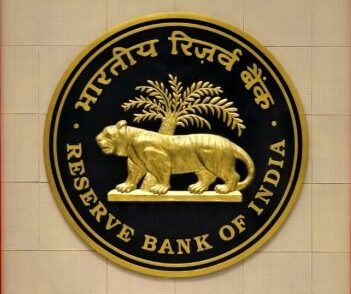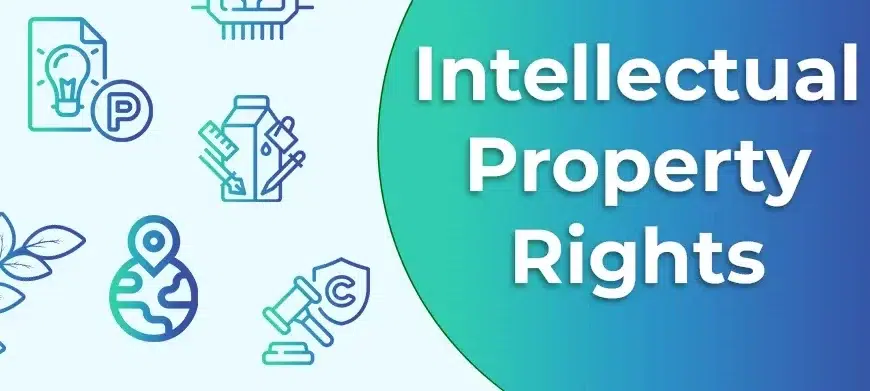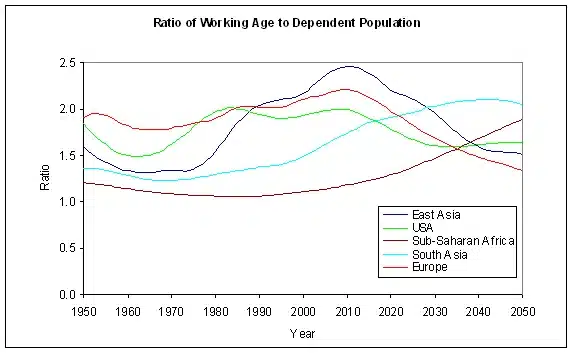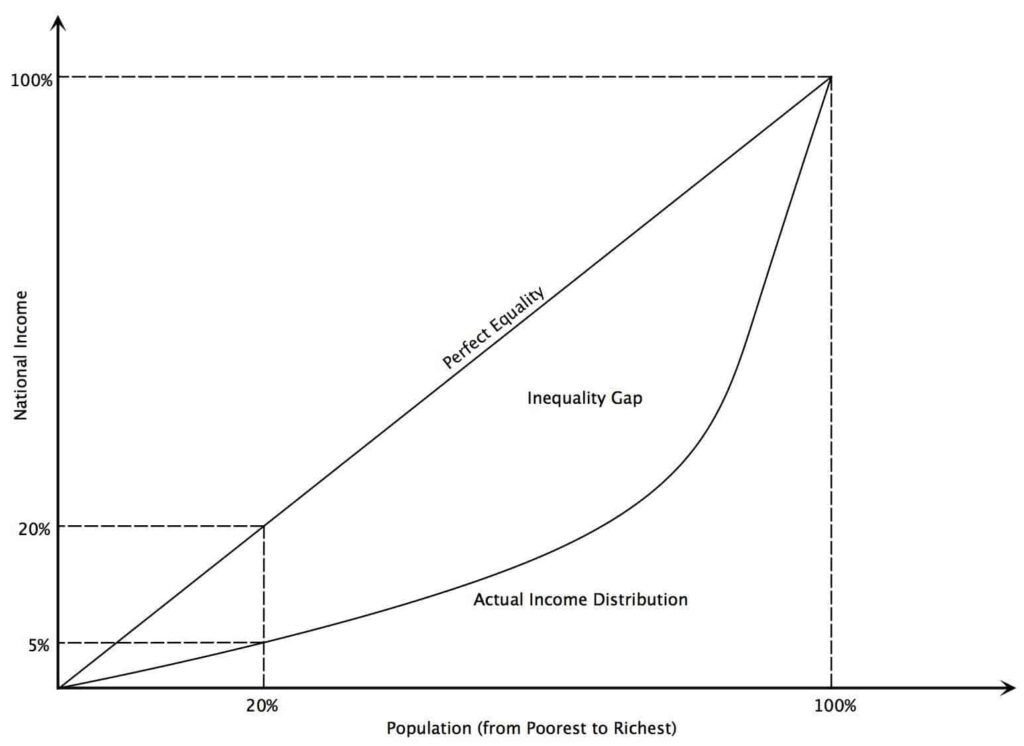Why in News ?
The Reserve Bank has notified the inclusion of retail and wholesale trade under the micro, small and medium enterprises (MSME) category.
- This will help retail and wholesale trade benefit from priority sector lending under RBI guidelines.
- The revised guidelines will benefit 2.5 crore retail and wholesale traders.
- The move would also allow them to register on the Udyam portal for MSMEs.
What is Priority Sector Lending ?
- Priority Sector refers to those sectors of the economy which may not get timely and adequate credit.
- Thus, RBI mandates banks to lend a certain portion of their funds to specified sectors, like agriculture, Micro, Small and Medium Enterprises (MSMEs), export credit, education, housing, social infrastructure, renewable energy among others.
- All scheduled commercial banks and foreign banks (with a sizable presence in India) are mandated to set aside 40% of their Adjusted Net Bank Credit (ANBC) for lending to these sectors.
- Regional rural banks, co-operative banks and small finance banks have to allocate 75% of ANBC to PSL.
- This is essentially meant for an all round development of the economy as opposed to focusing only on the financial sector.
- As per the RBI circular released in 2016, there are eight broad categories of the Priority Sector Lending.
- They are: (1) Agriculture (2) Micro, Small and Medium Enterprises (3) Export Credit (4) Education (5) Housing (6) Social Infrastructure (7) Renewable Energy (8) Others.
- The others category includes personal loans to weaker section, loans to distressed persons, loans to state sponsored organisations for SC/ST.
How is RBI revamping PSL?

- The current banking and economic situation demands a fresh round of thinking regarding priority sector lending (PSL) guidelines.
- Reserve Bank of India (RBI) initiated two significant steps.
- First, it revamped PSL norms by including some new sectors such as social infrastructure, renewable energy and medium enterprises among others.
- Second was the introduction of the scheme of priority sector lending certificates (PSLC) to facilitate the achievement of PSL targets by banks.
- This is to incentivise banks having surplus in their priority sector lending to sell this surplus to peers that are falling short.
- The total volume traded at the end of September 2016 was about Rs 140 billion.
What role does RIDF play?
- When banks fall short to achieve PSL target, it has to park the difference amount in RIDF fund of NABARD.
- The Rural Infrastructure Development Fund(RIDF) was set up by the Government of India in 1995-96 for financing ongoing rural Infrastructure projects.
- The Fund is maintained by the National Bank for Agriculture and Rural Development(NABARD).
- The main objective of the Fund is to provide loans to State Governments and State-owned corporations to enable them to complete ongoing rural infrastructure projects.
- The activities to be financed under RIDF as classified under three broad categories namely a) Agriculture and related sector b) Social sector and c) Rural connectivity.
What is PSLCs?
- Priority Sector Lending Certificates (PSLCs) are instruments that enable banks to achieve their priority sector lending targets without actually disbursing loans to sectors outside their comfort zone.
- PSL certificates allow banks sitting on surplus loans to a priority sector to sell certificates to banks that haven’t met their targets, pocketing a sizeable fee for this trade. The said loans however do not change hands.
Why is it important?
- The RBI mandates banks to lend a minimum of 40 per cent of their total loans to priority sectors such as agriculture, education, social housing, and micro enterprises. Aside from the overall target, banks are also required to meet sub-targets within this, such as 18 per cent towards agriculture (8 per cent for small and marginal farmers), 7.5 per cent for micro enterprises and 10 per cent for weaker sections.
- While banks almost always meet the overall target, keeping up with the sub-targets was getting difficult for banks with limited expertise in certain sectors. Also, banks were sceptical about operating out of their niche, fearing poor loan judgments and dents to their profits. Earlier, in the event of a shortfall in any specific category, banks had to make good this shortfall by either buying out such priority sector loans (in full) from other banks or had to pay a penalty to the Rural Infrastructure Development Fund (RIDF).
- However, from April 2016 onwards, the RBI launched an online trading platform — the PSLC platform — to allow banks to trade in PSLCs to meet the sectoral sub-targets. Rather than offering fresh loans, banks were only required to hold PSLCs reflecting lending by others.
- Not only were the costs involved limited to the fee on the certificates, but trading in the certificates also helped curb their risk exposure. Further, the online trading platform ensured that the fee on PSLCs was market driven, based on the demand and supply in each category.
How it helps Banks ?
- Like other businesses, banks have their specialisations too. Not all banks are good at lending to every category of borrower.
- Buying PSLCs allows banks not familiar with a certain category of borrowers to leave the lending to others and meet their PSL requirement without having to take the risks on their books.
- Similarly, banks that are over-achievers in a certain category can cash in on their achievements over targets.
Frequently Asked Questions
1. What are the different categories under priority sector?
Priority Sector includes the following categories:
(i) Agriculture
(ii) Micro, Small and Medium Enterprises
(iii) Export Credit
(iv) Education
(v) Housing
(vi) Social Infrastructure
(vii) Renewable Energy
(viii) Others
2. What are the Targets and Sub-targets for banks under priority sector?
The targets and sub-targets for banks under priority sector are as follows:
| Categories | Domestic commercial banks (excl. RRBs & SFBs) & foreign banks with 20 branches and above | Foreign banks with less than 20 branches | Regional Rural Banks | Small Finance Banks |
| Total Priority Sector | 40 per cent of Adjusted Net Bank Credit (ANBC) or Credit Equivalent of Off-Balance Sheet Exposure (CEOBE) whichever is higher | 40 per cent of ANBC or CEOBE whichever is higher; out of which up to 32% can be in the form of lending to Exports and not less than 8% can be to any other priority sector | 75 per cent of ANBC or CEOBE whichever is higher; However, lending to Medium Enterprises, Social Infrastructure and Renewable Energy shall be reckoned for priority sector achievement only up to 15 per cent of ANBC. | 75 per cent of ANBC or CEOBE whichever is higher. |
| Agriculture | 18 per cent of ANBC or CEOBE, whichever is higher; out of which a target of 10 percent# is prescribed for Small and Marginal Farmers (SMFs) | Not applicable | 18 per cent ANBC or CEOBE, whichever is higher; out of which a target of 10 percent# is prescribed for SMFs | 18 per cent of ANBC or CEOBE, whichever is higher; out of which a target of 10 percent# is prescribed for SMFs |
| Micro Enterprises | 7.5 per cent of ANBC or CEOBE, whichever is higher | Not applicable | 7.5 per cent of ANBC or CEOBE, whichever is higher | 7.5 per cent of ANBC or CEOBE, whichever is higher |
| Advances to Weaker Sections | 12 percent# of ANBC or CEOBE, whichever is higher | Not applicable | 15 per cent of ANBC or CEOBE, whichever is higher | 12 percent# of ANBC or CEOBE, whichever is higher |
3. What are the categories under ‘Agriculture’?
The activities covered under Agriculture are classified under three sub-categories viz. Farm credit, Agriculture infrastructure and Ancillary activities.
4. Whether limits are prescribed for loans sanctioned to Micro, Small and Medium Enterprises to be classified as priority sector?
For classification under priority sector, no limits are prescribed for bank loans sanctioned to Micro, Small and Medium Enterprises engaged in the manufacture or production of goods under any industry specified in the first schedule to the Industries (Development and Regulation) Act, 1951 and as notified by the Government from time to time. The manufacturing enterprises are defined in terms of investment in plant and machinery under MSMED Act 2006.
Bank loans to Micro, Small and Medium Enterprises engaged in providing or rendering of services and defined in terms of investment in equipment under MSMED Act, 2006, irrespective of loan limits, are eligible for classification under priority sector, w.e.f. March 1, 2018.
5. What is the applicable limit and purpose for social infrastructure loans under priority sector?
Bank loans up to a limit of ₹ 50 million per borrower for building social infrastructure for activities namely schools, health care facilities, drinking water facilities and sanitation facilities (including loans for construction/ refurbishment of toilets and improvement in water facilities in the household) in Tier II to Tier VI centres are eligible for classification under priority sector.
Bank credit to Micro Finance Institutions (MFI) extended for on-lending to individuals/ members of SHGs/ JLGs for water and sanitation facilities is also eligible for classification as priority sector loans under ‘Social Infrastructure’ subject to certain criteria.
6. What is the applicable limit and purpose for loans for renewable energy under priority sector?
Bank loans up to a limit of ₹ 150 million to borrowers for purposes like solar based power generators, biomass based power generators, wind mills, micro-hydel plants and for non-conventional energy based public utilities viz. street lighting systems, and remote village electrification are eligible to be classified under priority sector loans under ‘Renewable Energy’. For individual households, the loan limit is ₹ 1 million per borrower.
7. What is the loan limit for education under priority sector?
Loans to individuals for educational purposes including vocational courses upto ₹ 1 million irrespective of the sanctioned amount are eligible for classification under priority sector.
8. What is the limit for housing loans under priority sector?
Loans to individuals up to ₹3.5 million in metropolitan centres (with population of ten lakh and above) and loans up to ₹ 2.5 million in other centres for purchase/construction of a dwelling unit per family, are eligible to be considered as priority sector provided the overall cost of the dwelling unit in the metropolitan centre and at other centres does not exceed ₹ 4.5 million and ₹ 3 million, respectively. Housing loans to banks’ own employees are not eligible for classification under priority sector.
9. What is included under Weaker Sections under priority sector?
Priority sector loans to the following borrowers are eligible to be considered under Weaker Sections category:-
| No. | Category |
| 1. | Small and Marginal Farmers |
| 2. | Artisans, village and cottage industries where individual credit limits do not exceed ₹ 0.1 million |
| 3. | Beneficiaries under Government Sponsored Schemes such as National Rural Livelihoods Mission (NRLM), National Urban Livelihood Mission (NULM) and Self Employment Scheme for Rehabilitation of Manual Scavengers (SRMS) |
| 4. | Scheduled Castes and Scheduled Tribes |
| 5. | Beneficiaries of Differential Rate of Interest (DRI) scheme |
| 6. | Self Help Groups |
| 7. | Distressed farmers indebted to non-institutional lenders |
| 8. | Distressed persons other than farmers, with loan amount not exceeding ₹ 0.1 million per borrower to prepay their debt to non-institutional lenders |
| 9. | Individual women beneficiaries up to ₹ 0.1 million per borrower |
| 10. | Persons with disabilities |
| 11. | Overdraft limit to PMJDY account holder upto ₹ 10,000/- with age limit of 18-65 years. |
| 12. | Minority communities as may be notified by Government of India from time to time |
In States, where one of the minority communities notified is, in fact, in majority, item (12) will cover only the other notified minorities. These States/ Union Territories are Jammu & Kashmir, Punjab, Meghalaya, Mizoram, Nagaland and Lakshadweep.
10. What are Priority Sector Lending Certificates (PSLCs)?
Priority Sector Lending Certificates (PSLCs) are a mechanism to enable banks to achieve the priority sector lending target and sub-targets by purchase of these instruments in the event of shortfall. This also incentivizes surplus banks as it allows them to sell their excess achievement over targets thereby enhancing lending to the categories under priority sector. Under the PSLC mechanism, the seller sells fulfilment of priority sector obligation and the buyer buys the obligation with no transfer of risk or loan assets.
11. What are the instructions to Banks with regard to acknowledgement of priority sector loan applications?
Banks should provide acknowledgement for loan applications received under priority sector loan. A time limit is required to be prescribed by the Bank Board within which the bank communicates its decision in writing to the applicants.
12. What is the rate of interest for loans under priority sector?
The rate of interest on bank loans will be as per directives issued by the Department of Banking Regulation of RBI, from time to time. Priority sector guidelines do not lay down any preferential rate of interest for priority sector loans.
Also refer :







